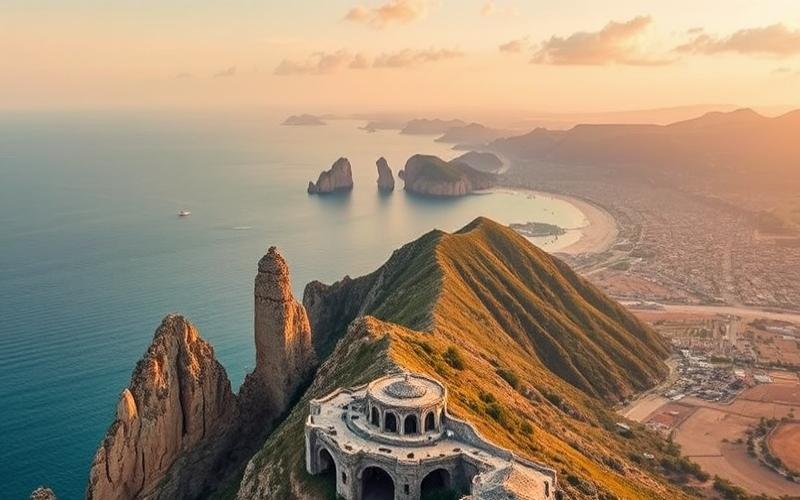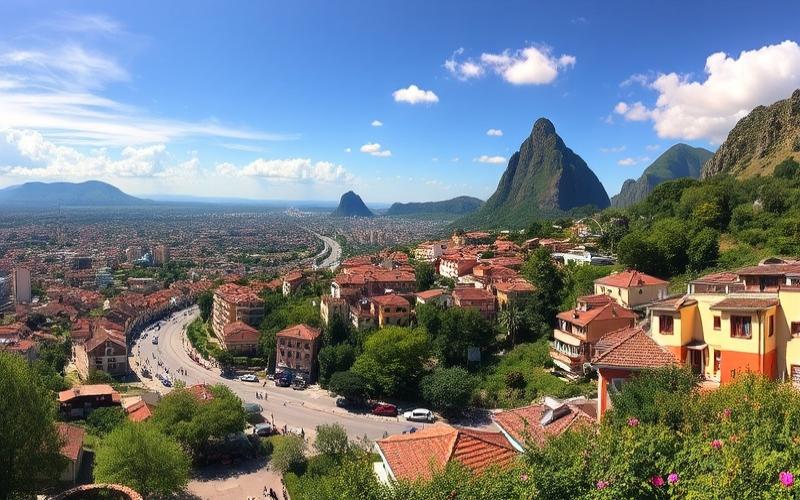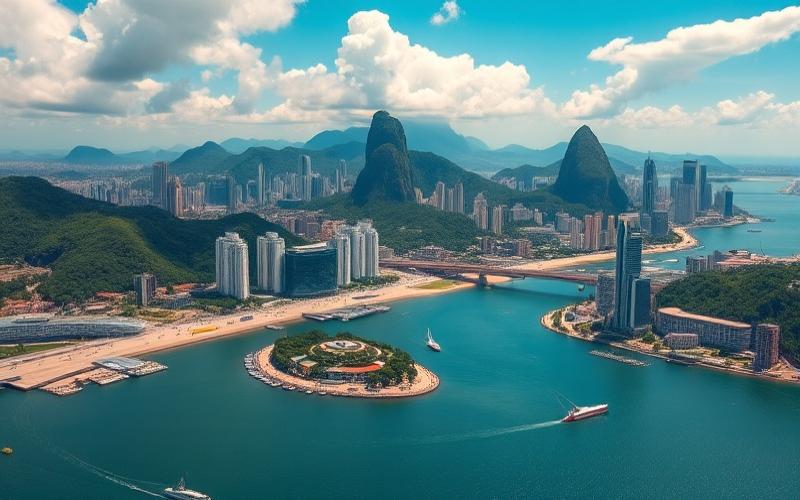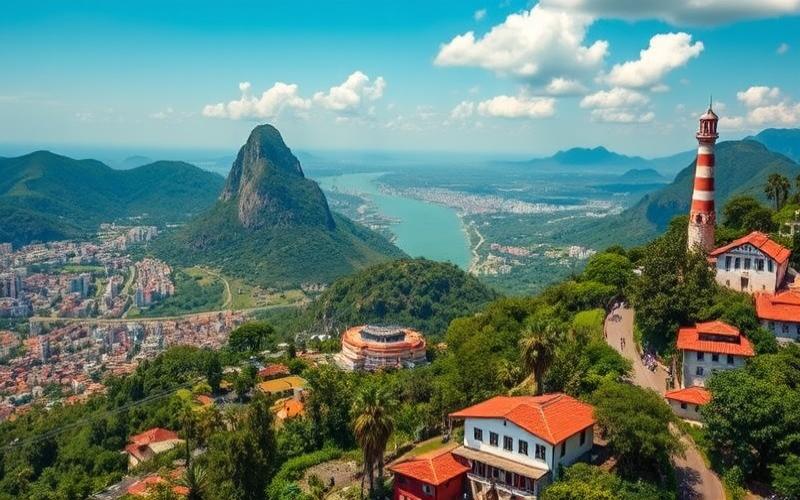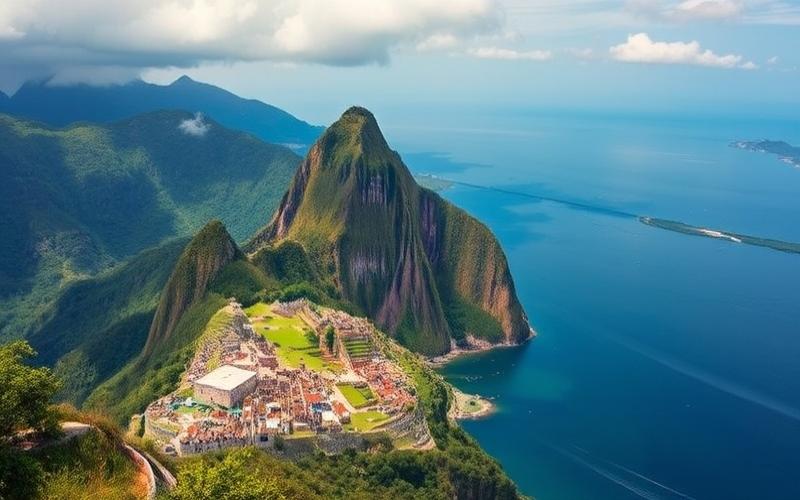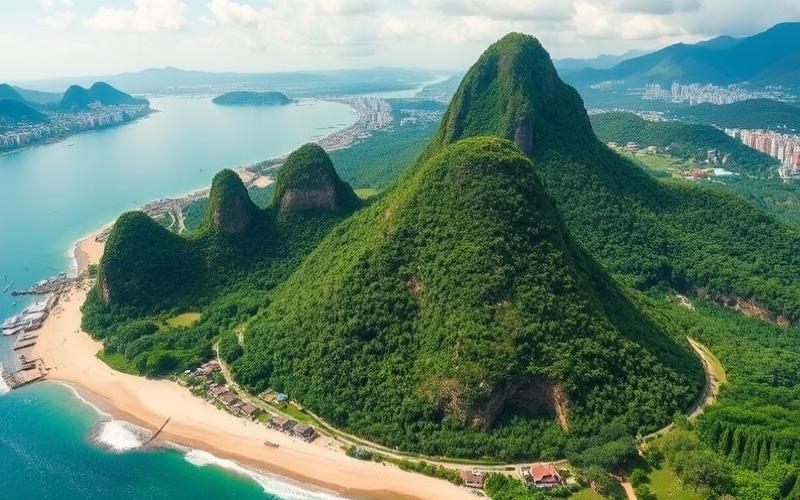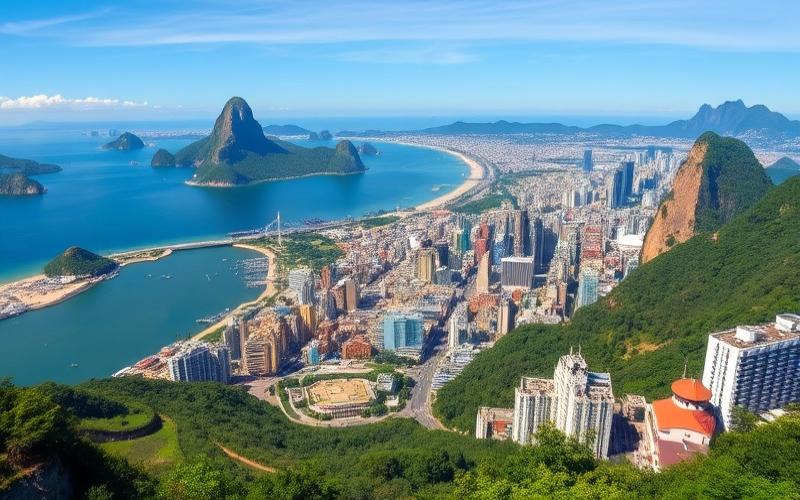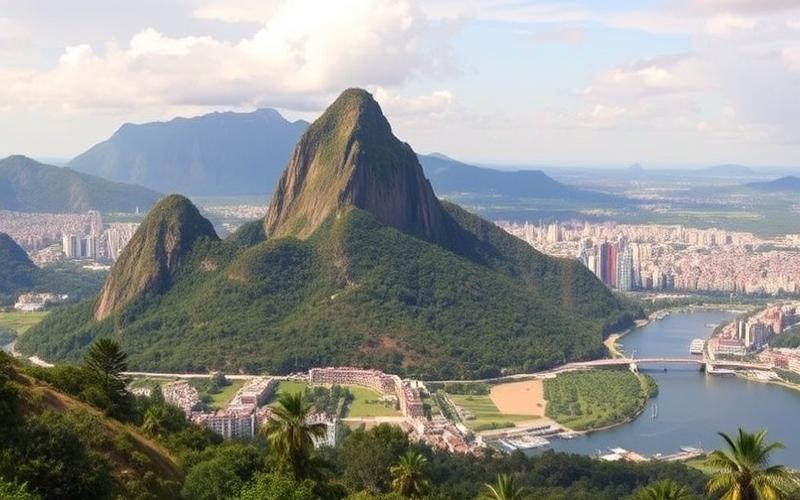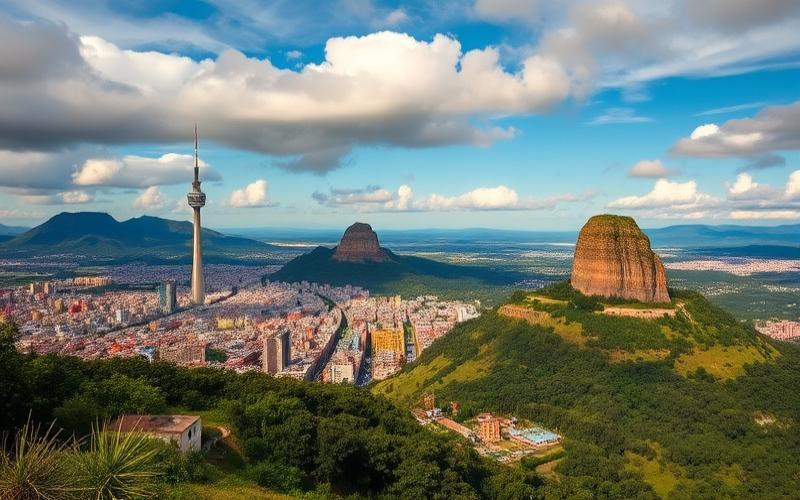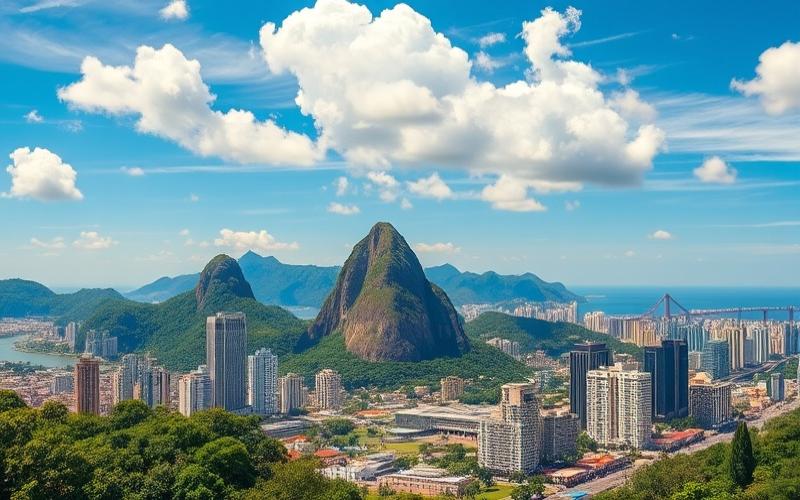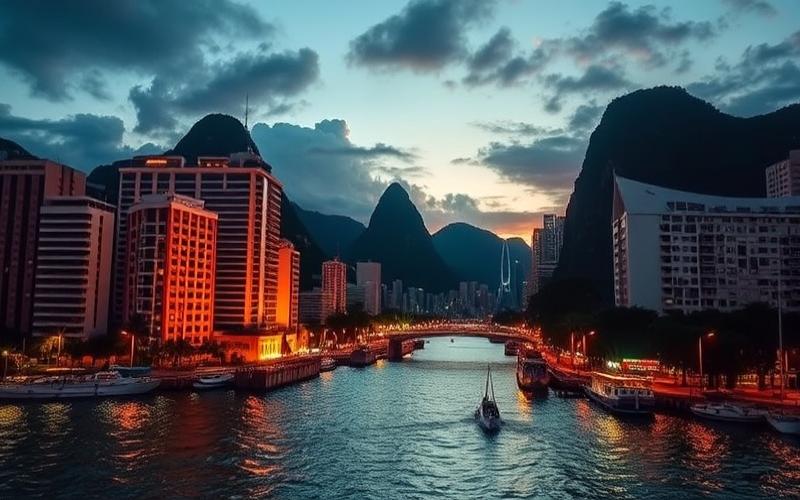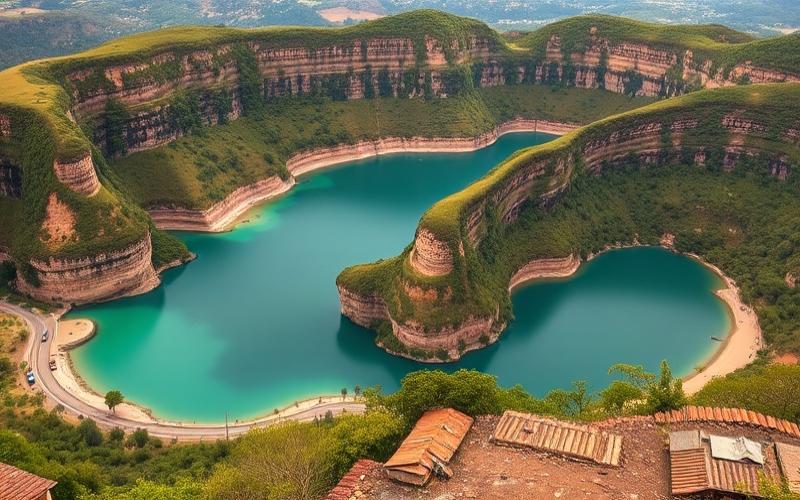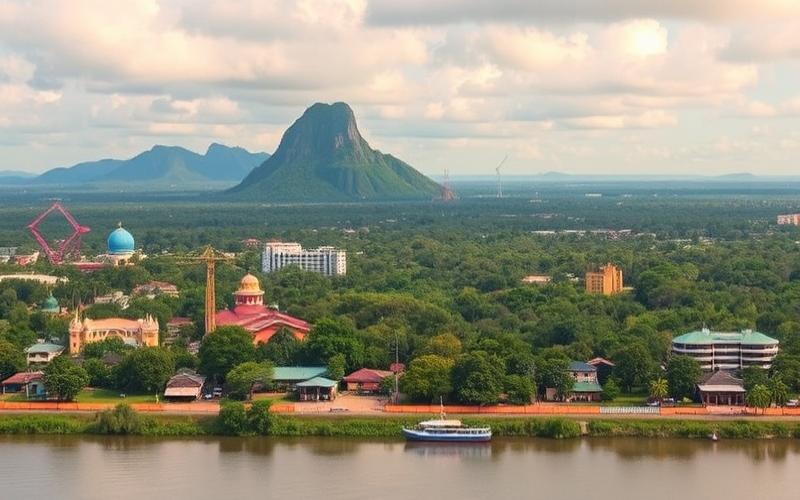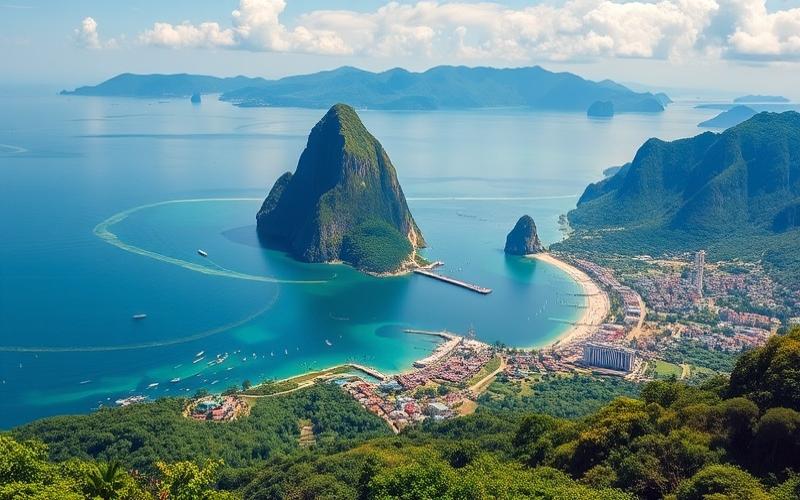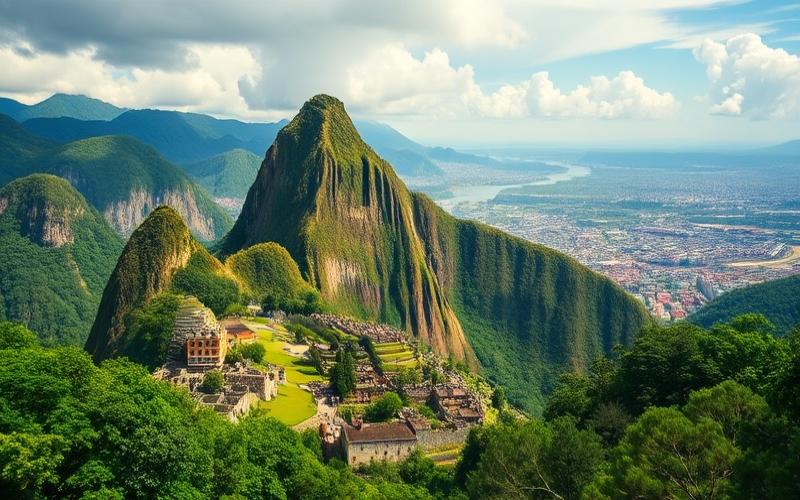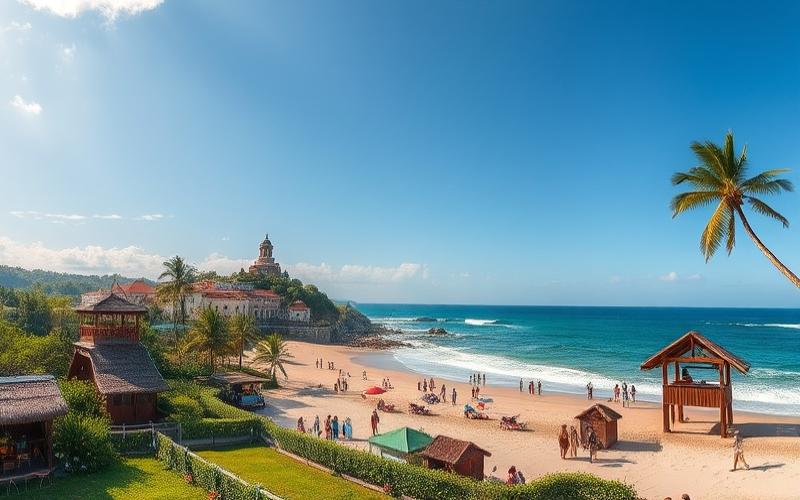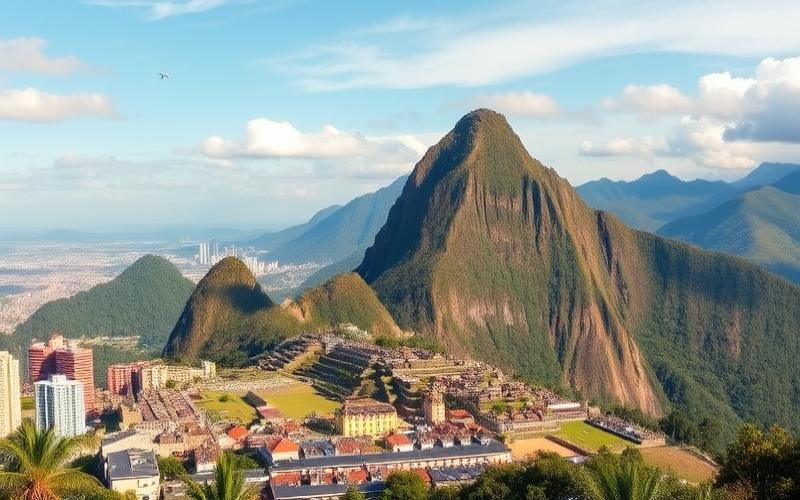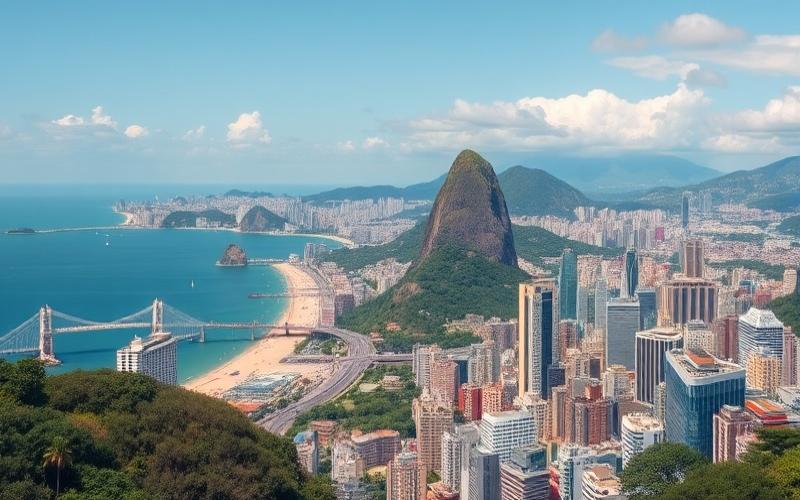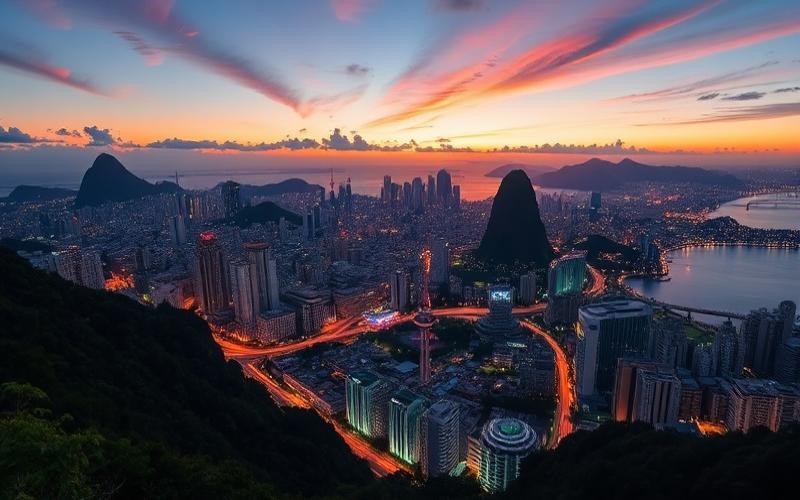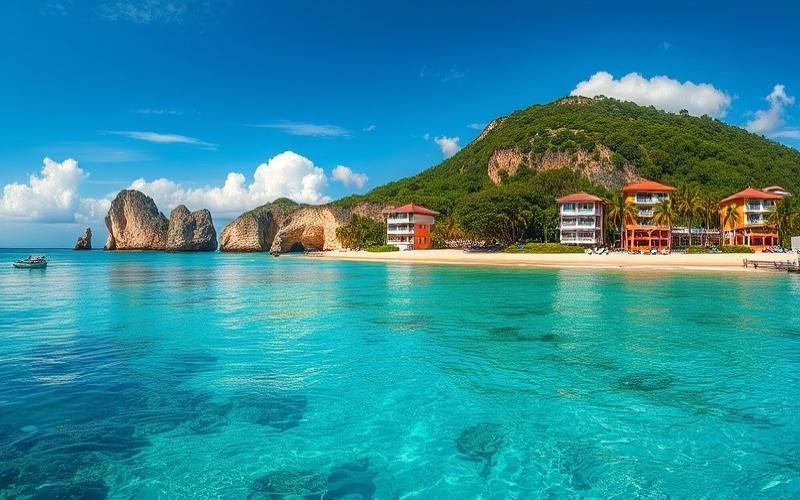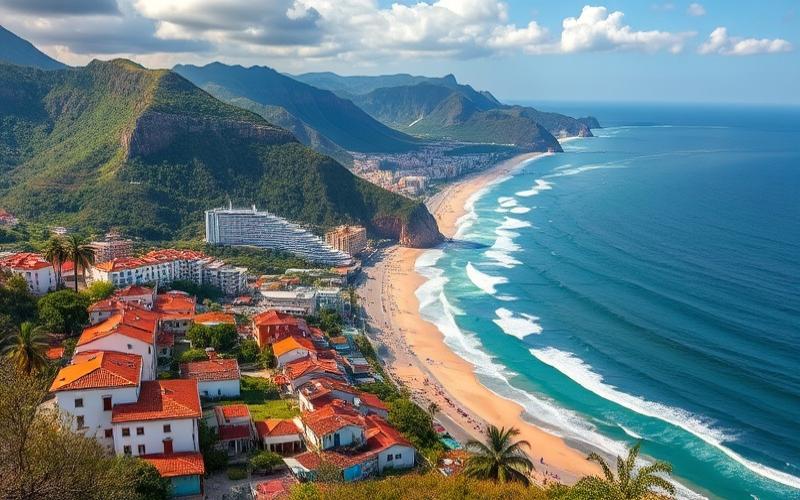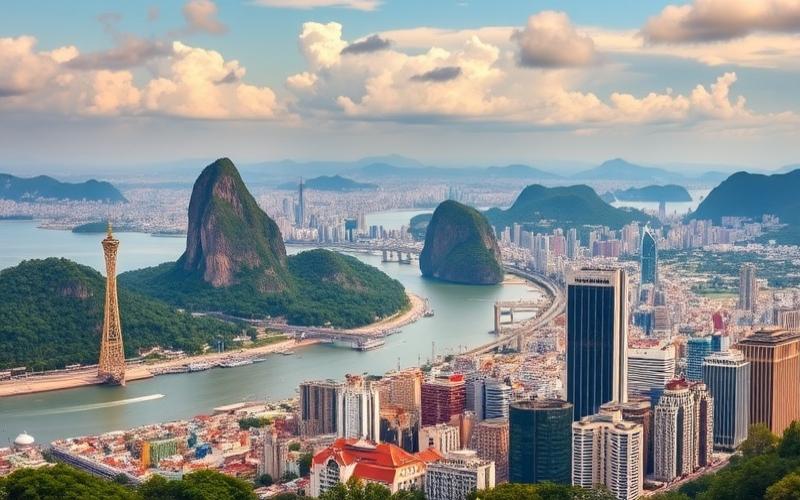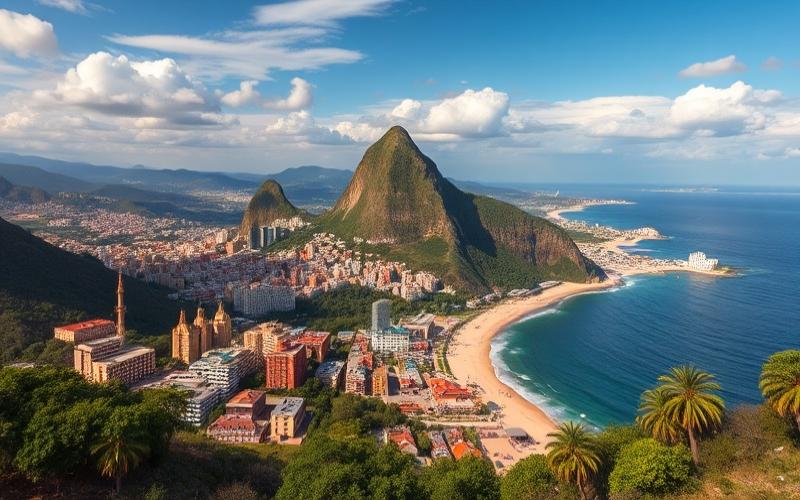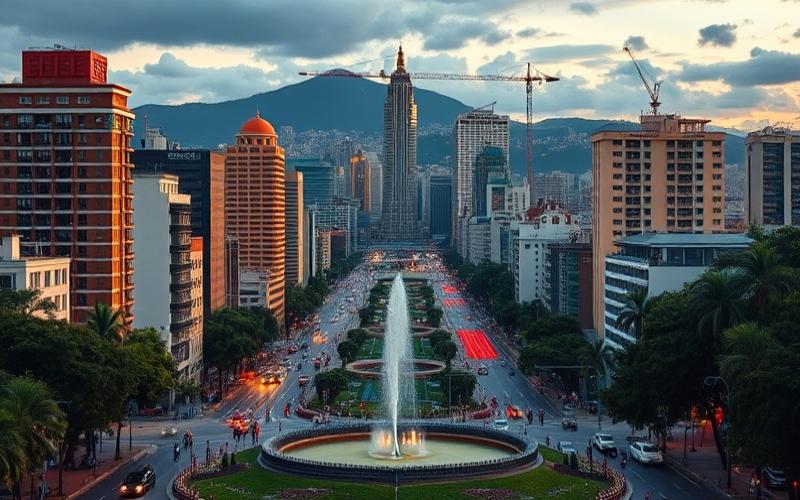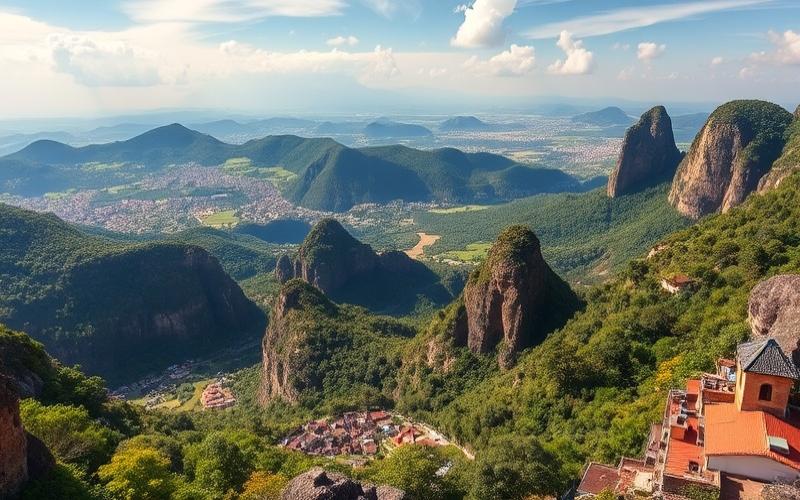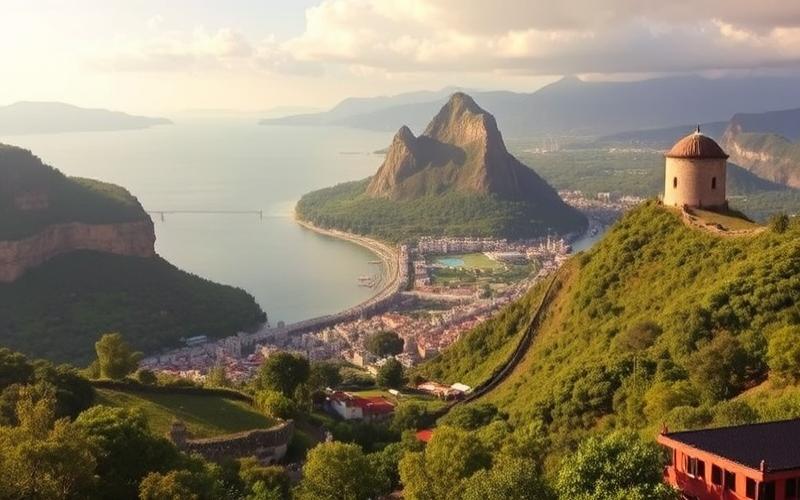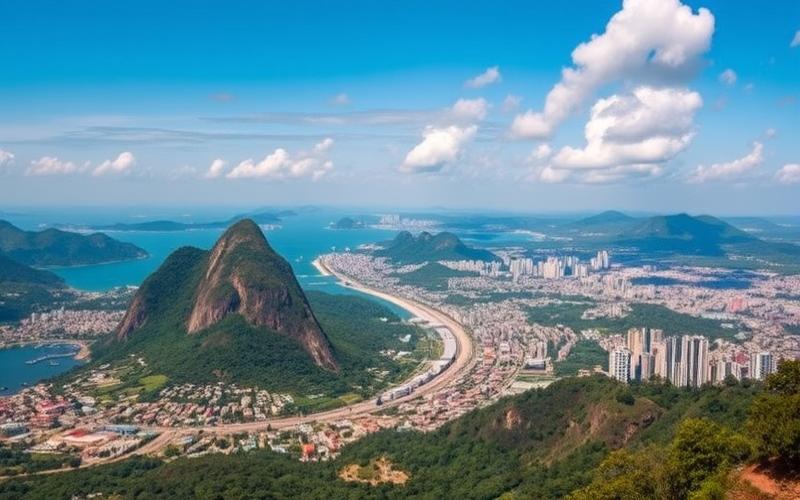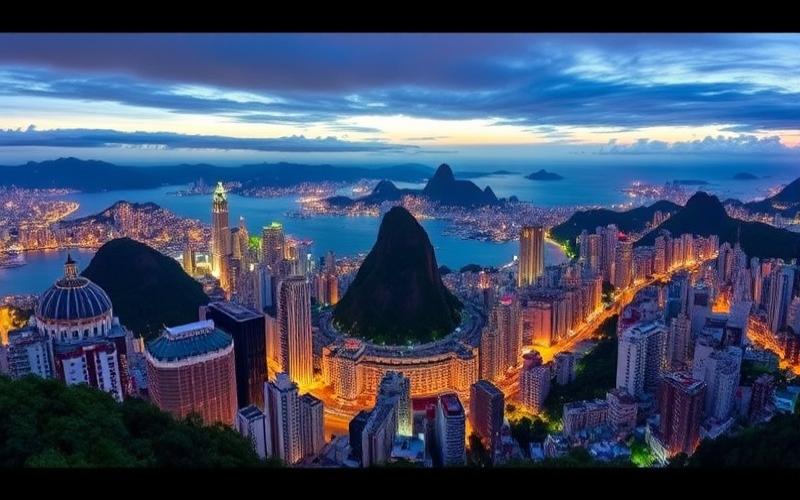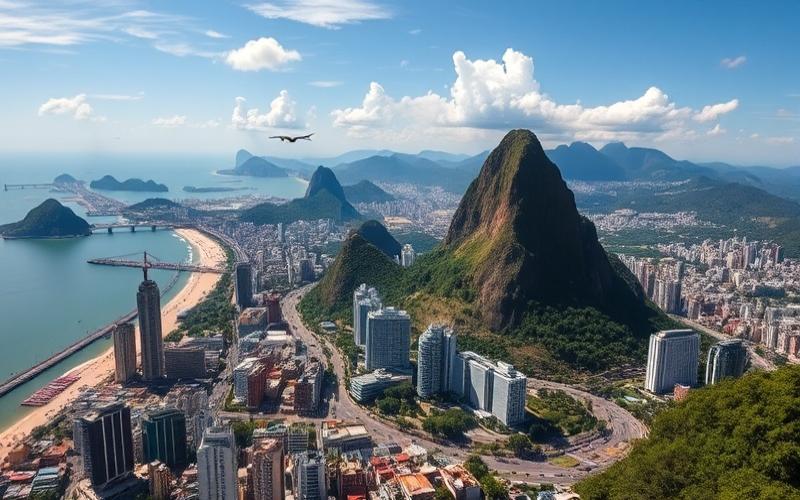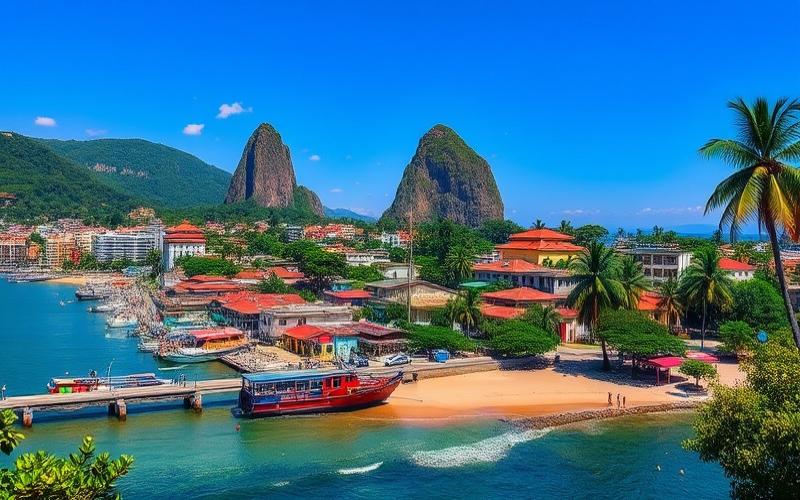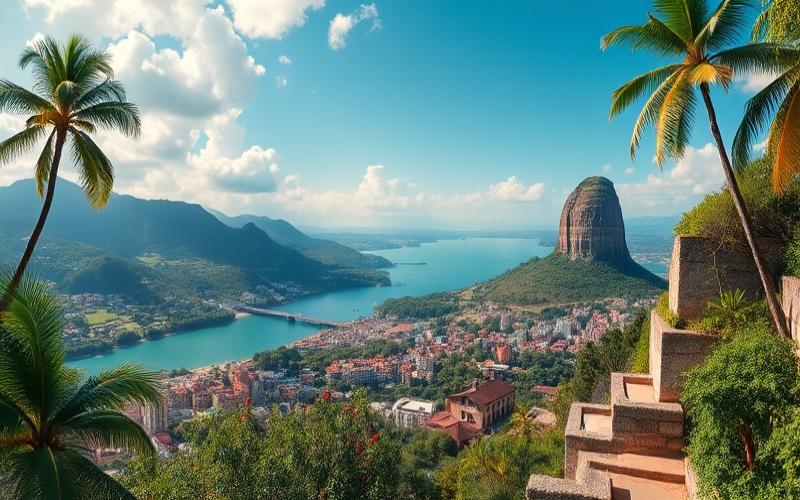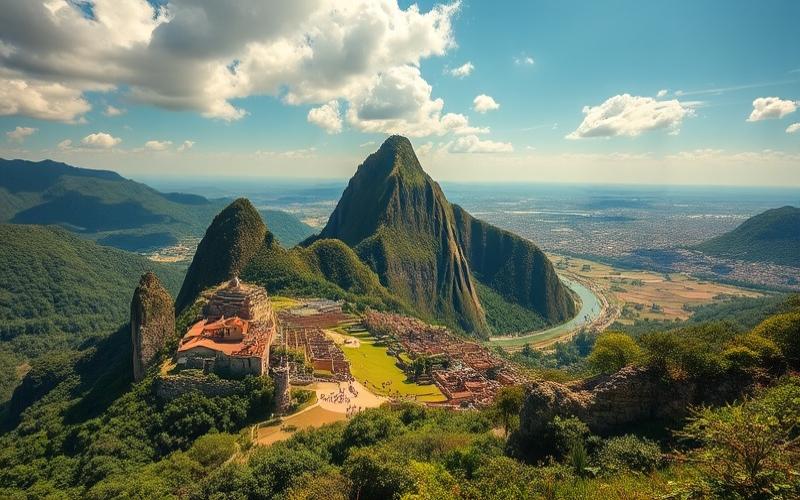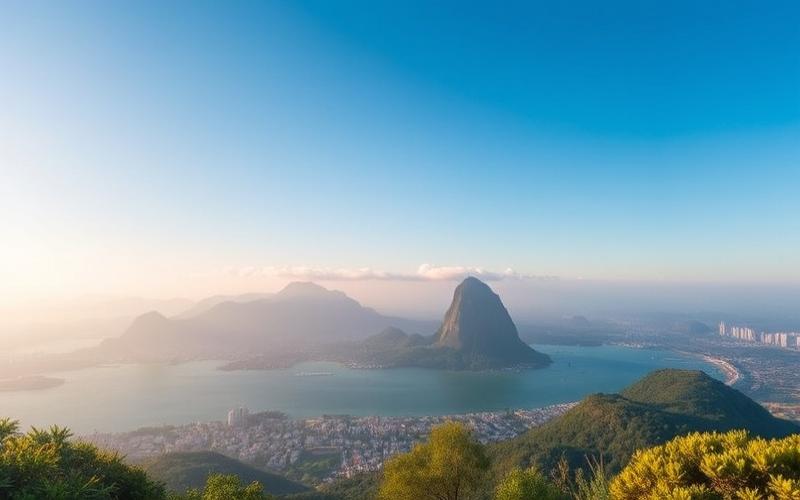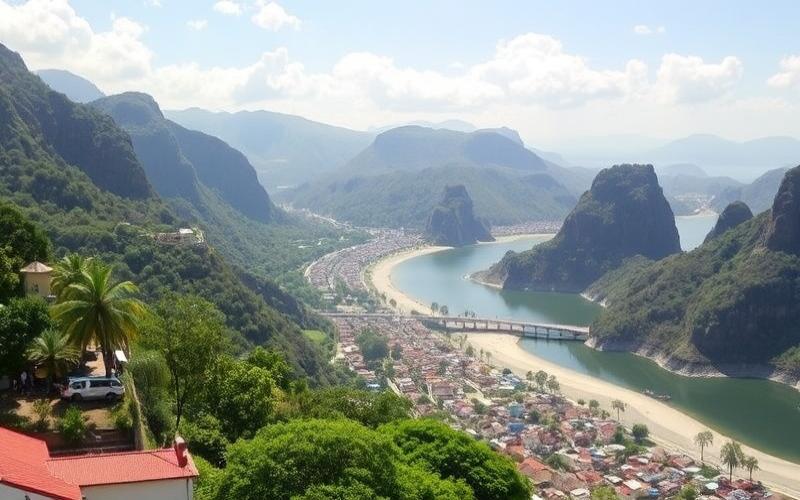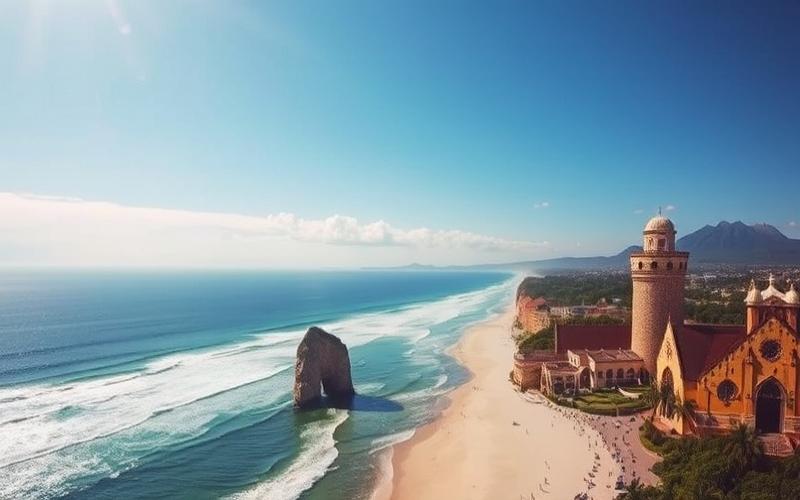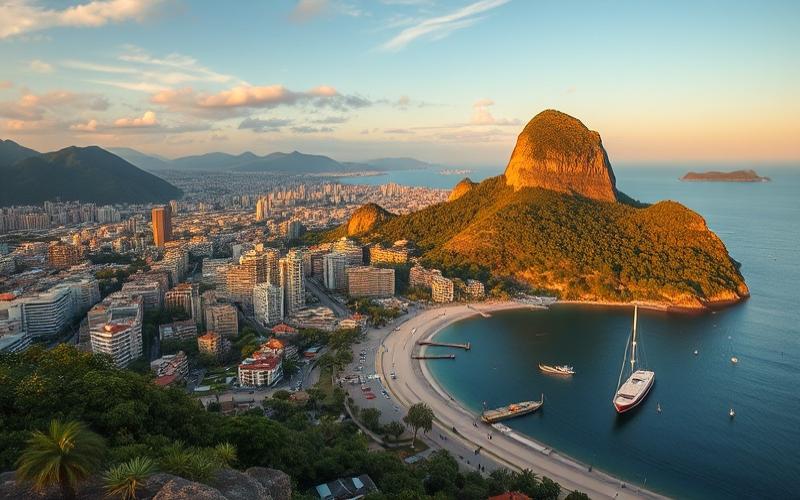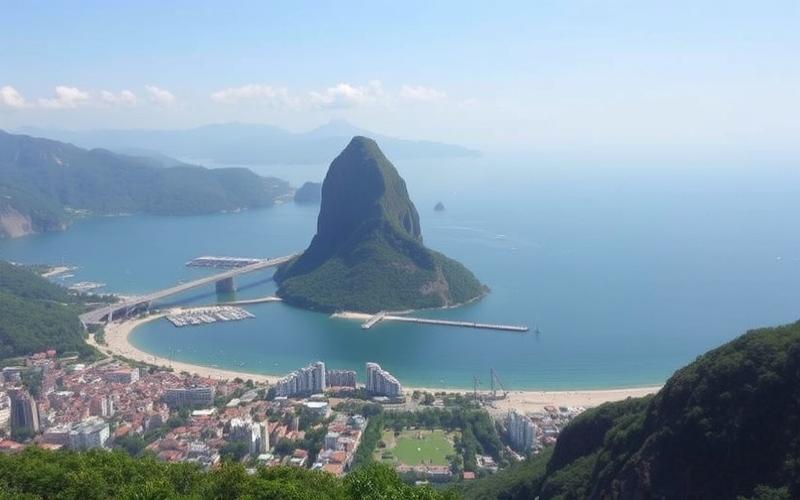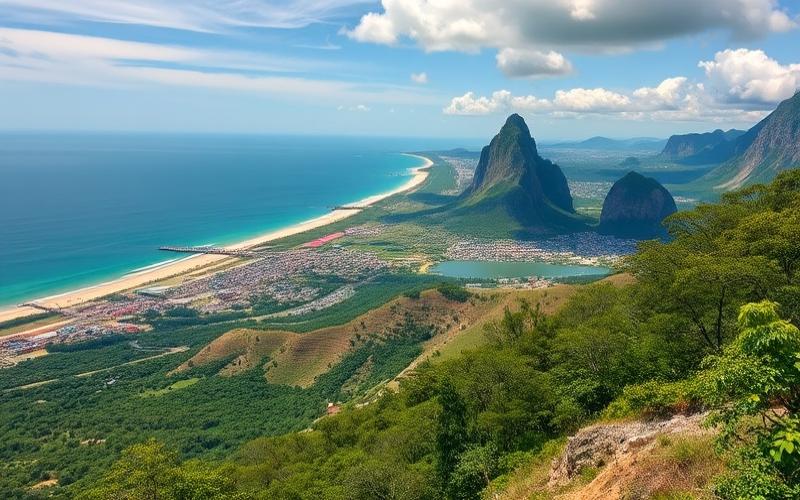
 Published on and written by Cyril Jarnias
Published on and written by Cyril Jarnias
Brazil’s Luxury Real Estate: A Market in Transformation
Brazil’s luxury real estate market is capturing global attention with its unparalleled blend of breathtaking landscapes and sophisticated architecture. This expanding market is also undergoing notable transformation driven by growing expectations from female clients.
These clients aren’t just seeking residences that embody elegance and prestige, but also spaces that accommodate their contemporary lifestyles. They demand customized elements ranging from eco-innovation to premium services dedicated to their well-being.
Good to Know:
As professional women and entrepreneurs increasingly influence this sector, their preferences are redefining luxury standards, creating a more diverse and inclusive market.
Segmentation of Female Investors in Brazil’s Luxury Real Estate
Typical Profiles of Female Investors in Brazil’s Luxury Real Estate
- Heiresses/Family Wealth Managers (40-65 years, HNWI/UHNWI)
- Primary motivations: wealth preservation and transfer, diversification against financial asset volatility, pursuit of stable income and “safe haven” assets.
- Property preferences: high-end rental buildings in prime São Paulo (Itaim, Jardins) and Rio (Leblon, Ipanema) neighborhoods, premium boutique offices, waterfront second homes (Angra, Trancoso, Búzios).
- Service expectations: turnkey rental governance, tax and structuring (SPV/trust), enhanced security, high confidentiality, 24/7 concierge, and wealth reporting.
- Tech/Finance Entrepreneurs and Executives (30-50 years, Growing HNWI)
- Primary motivations: risk-adjusted return optimization, geographic arbitrage, combined usage value and liquidity.
- Property preferences: “branded residences” apartments with hotel services, ocean-view penthouses, units in mixed-use projects near business hubs; interest in eco-efficient and certified assets.
- Service expectations: advanced home automation, connectivity, wellness services, private workspaces, short/mid-term rental management flexibility, performance data transparency.
- International/Dual-Resident Investors (35-60 years, HNWI/UHNWI)
- Primary motivations: lifestyle, currency hedging, access to luxury offerings still competitive vs. US/Europe, diversification outside country of residence.
- Property preferences: contemporary seaside villas, renovated heritage charm houses, highly secure condominiums; preference for trophy locations with strong resale value.
- Service expectations: acquisition/visa assistance, multilingual concierge, hotel standards, comprehensive maintenance, compliance and insurance guarantees.
- High-Income Professional Women (35-55 years, HENRY to HNWI)
- Primary motivations: wealth building, inflation protection, quality rental income.
- Property preferences: prime studios/2-3 bedroom units for high-end furnished rentals, small condominiums with premium amenities, compact second homes with strong seasonal rental potential.
- Service expectations: premium rental management package, custom furniture, tax and energy optimization, rental guarantees.
- Philanthropists/Impact-Driven Investors (40-65 years, UHNWI)
- Primary motivations: values/assets alignment, reduced carbon footprint, local contribution.
- Property preferences: HQE/LEED/EDGE certified properties, urban or heritage redevelopment projects, estates with environmental conservation.
- Service expectations: impact measurement, material traceability, renewable energy, partnerships with sustainable operators.
Demographic Trends and Market Effects
Urban affluent aging and rising dual-income households are driving demand for secure properties near healthcare services, with concierge services and accessibility.
Growth of HNWI in Latin America and Brazil’s economic recovery are stimulating local and international demand for the prime segment, with average luxury price increases of approximately 8% annually over the past five years.
Increased appeal for “branded residences” and high-end hotel services, identified as a major growth driver in Brazil’s luxury segment.
Continuous improvement of urban infrastructure (transportation, facilities) enhances prime neighborhood value and luxury asset liquidity.
International price differential: for equivalent square footage, a luxury villa in Búzios ≈ 30% cheaper than in iconic European destinations, supporting geographic arbitrage for international investors.
Preferred Property Types and Allocation Logic
- Trophy second homes (coastal, exceptional views) for use/appreciation.
- Premium rental buildings in São Paulo and Rio for recurring income and appreciation potential.
- Penthouses and duplexes with terraces/suspended gardens for scarcity effect.
- Branded residences with hotel service pools for liquidity and simplified management.
- Renovated high-end heritage properties for aesthetic differentiation and long-term value.
Specific Service and Customization Expectations
- Security and confidentiality: access control, surveillance, private elevators, secure parking.
- 24/7 concierge and à la carte service ecosystem (housekeeping, private chef, wellness treatments, driver).
- Customization: bespoke finishes, decor/furniture packages, professional kitchens, private wellness spaces (spa, gym), soundproofed home office.
- Technology: comprehensive home automation, air quality, energy efficiency, generators and solar panels, EV charging stations.
- Sustainability and compliance: environmental certifications, noble and durable materials, exhaustive technical documentation.
- Premium rental management: revenue management, multi-channel marketing, rental insurance, digital reporting, tax optimization.
Developer Marketing Strategies to Capture This Segment
Product Positioning
- Development of branded residences with hoteliers/luxury brands to import service standards and enhance resale value.
- Limited edition “signature” units with renowned architects/designers; heritage or artistic narrative.
- Integration of measurable ESG attributes to meet impact and resilience demand.
Go-to-Market and Customer Experience
- Relationship marketing via private clubs, family offices, women wealth/entrepreneur networks; experiential events (previews, art, gastronomy).
- Premium digital journey: immersive tours, secure data-room, transparency on fees/performance, yield simulators.
- “Key-in-hand” post-purchase services (furniture, rental operation, property management) to reduce friction and improve perceived ROI.
Pricing and Scarcity Management
- Phased launches with premium view/floor units, time-limited customization options.
- Guaranteed or pooled rental programs for income-focused investors.
- Private banking partnerships for dedicated financing solutions (LTV, rates, multi-currency facilities).
Communication and Trust
- Highlighting legal security, compliance and decade-long guarantees; publication of operational performance indicators.
- Buyer testimonials and case studies, with resale/occupancy metrics.
- Transparency on environmental and social impact of projects.
Recent Statistics and Benchmarks
+8%/year average on Brazil’s luxury real estate prices over 5 years, supported by local and international demand.
Expected growth of branded residences segment as key driver for attracting foreign buyers.
Favorable international price differential: luxury villa in Búzios ~30% cheaper than in Saint-Tropez, supporting cross-border investment flows.
| Buyer Segment | Age Range | Key Motivations | Preferred Property Types | Priority Services |
|---|---|---|---|---|
| Heiresses/Wealth Managers | 40-65 | Preservation, transfer, income | Rental buildings, waterfront villas | Security, concierge, wealth structuring |
| Entrepreneurs/Executives | 30-50 | Return, liquidity, tech | Branded residences, penthouses | Home automation, wellness, flexible rental management |
| International/Dual-Residents | 35-60 | Lifestyle, currency, diversification | Coastal villas, secure condos | Multilingual concierge, total maintenance |
| HENRY Professionals | 35-55 | Wealth building, rental income | Prime rental apartments | Management package, custom furniture |
| Philanthropists/Impact | 40-65 | ESG, reduced footprint | Certified properties, redevelopment | Impact measurement, renewable energy |
Good to Know:
In Brazil, female luxury real estate investors divide into several profiles, such as young professionals seeking to diversify their wealth, and established businesswomen, often located in major metropolises like São Paulo and Rio de Janeiro. Their age generally ranges from 30 to 55 and their high purchasing power often positions them at the top of the social scale. They are primarily motivated by portfolio expansion and financial security. Preferring luxury second homes or rental buildings, they show growing interest in properties offering premium services and increased customization. Recent demographic trends reveal a notable increase in investments by women, affecting the luxury real estate market to include smart technologies and eco-friendly solutions. According to a recent study, this segment now represents 30% of luxury buyers in Brazil. Real estate developers are adopting targeted marketing strategies, focused on personalized consultations and exclusive viewings, to attract these demanding clients.
Security of Women’s Residences in Brazil: A Paramount Criterion
Brazilian luxury residences highlight a combination of integrated measures: 24/7 surveillance, biometric access control, secure construction standards, highly secure locations, rapid access to emergency services, and on-site trained security personnel, criteria that heavily influence purchasing decisions of female clients seeking peace of mind, confidentiality, and risk management.
Continuous Surveillance and Advanced Technologies
- HD cameras covering entrances, parking, elevators and common areas, with remote monitoring and immediate alert transmission to dedicated centers. The objective is to reduce theft and intrusion risks, the primary concern in Brazilian urban environments.
- Multi-factor access control: badges, temporary codes for visitors, and especially biometrics (fingerprint/facial) to secure lobbies, private elevators and service areas, limiting impersonation and unauthorized circulation.
- Integration of alarm buttons, intrusion detection, and video intercom to filter delivery personnel and service providers, addressing daily management of visitor flow, a sensitive topic for occupants.
Construction Standards and Building Design
- Reinforced doors, electronic locks, laminated anti-burglary glass, controlled elevator shafts, perimeter lighting and buffer zones (airlocks) to delay and deter intrusion, practices from highly secure residences adapted to the Brazilian context.
- Fire prevention and domestic risks: detectors (smoke, gas, CO), general alarm, evacuation plans, appropriately sized extinguishers and documented maintenance, elements expected by clients sensitive to clear emergency protocols.
Location and Emergency Service Accessibility
- Selection of neighborhoods with low risk exposure, proximity to police stations, fire departments, private hospitals and quick access routes for reduced response time, central dimension to reassure clients and their families.
- Local policies supporting women and institutional attention to security and priority access to services enhance the attractiveness of certain urban territories for female buyers.
On-Site Security Personnel
- 24/7 presence of qualified agents (patrols, log books, escalation protocols, training for violence and sensitive situations), coordination with law enforcement and medical services, key trust factor for residents.
- Filtering concierge and visitor/service provider management, including registration and temporary badges, perceived as guarantees of control and discretion by clients.
| Security Criterion | Female Client Expectations | Typical Devices |
|---|---|---|
| 24/7 Surveillance | Visibility and responsiveness | HD cameras, monitoring, real-time alerts |
| Access Control | Strict filtering, confidentiality | Biometrics, private elevators, visitor badges |
| Secure Building | Resilience, deterrence | Reinforced doors, strengthened glass, airlocks |
| Emergencies | Short response time | Proximity to police/fire/hospitals, evacuation plans |
| Personnel | Human accompaniment | Trained agents, concierge, procedures |
Representative Examples in Brazil
- High-end neighborhoods in major metropolises (São Paulo, Rio), where female demand favors residential complexes with strict access control and closed perimeters, continuing practices of gated communities aimed at reducing exposure to urban risks.
- Municipal and social initiatives focused on security and priority given to women indirectly contribute to the valuation of residences located in better-served areas with more devices, positively influencing their purchase choices.
Influence on Women’s Purchase Decisions
- Priority to safe location, proven emergency procedures and qualified human presence; these factors weigh as much as aesthetics or wellness amenities when the goal is daily serenity and during prolonged absences.
- Perception of a coherent security ecosystem (technology + building + personnel + urban environment) reduces anxiety related to theft and intrusion and improves quality of life, accelerating purchase decisions and supporting patrimonial value.
Trends and Evolutions
- Rise of integrated security solutions: centralized VMS, video analytics (behavioral detection), biometric and mobile-first access control, and procedures oriented “privacy-by-design” to reconcile security and discretion sought by women.
- “Safe neighborhood” approach: preference for addresses with safe urban ecosystems, proximity to private healthcare infrastructure and local security partnerships, supported by policies attentive to women’s needs.
- Personnel professionalization: training for specific risks (harassment, domestic violence, visitor management), transparent communication of security KPIs (response time, incidents avoided), reinforcing trust and differentiation of premium residences.
Good to Know:
In the context of luxury real estate in Brazil, security constitutes a paramount criterion for female clients, who seek extensive protection in their residences. Thus, buildings integrating 24/7 surveillance and advanced technologies such as biometric systems stand out, like those of the Villa Aymoré residence in Rio de Janeiro. Secure construction standards and strategic location, often in neighborhoods recognized for their tranquility, accentuate this feeling of safety. Accessibility to emergency services and the on-site presence of properly trained security personnel represent other crucial elements influencing purchase decisions. Recent trends demonstrate evolution towards increasingly sophisticated security measures, in response to growing resident concerns, thus illustrating the importance of this aspect in choosing a luxury property in Brazil.
Architecture and Design Adapted to Female Client Expectations
Architecture and design directly influence the quality of life for Brazilian luxury buyers by articulating fluid spaces, connection to nature and high-end finishes, while integrating wellness, security and refined customization. Popular projects prioritize open volumes, framed views, abundant natural light and sustainable materials associated with a neutral palette enhanced by vibrant accents.
Wellness Spaces and Relaxation Zones
- Master suites with spa-like bathrooms, ambient lighting, natural stone and noble wood for a soothing atmosphere.
- Shaded outdoor spaces, patios and terraces designed for contemplation, reading and yoga, promoting indoor-outdoor continuity.
- Modular living rooms and lounge areas that allow both family gatherings and individual retreats, enhancing emotional comfort and privacy.
Sustainable Materials and Aesthetics
- Use of wood and stones selected for durability and texture, with premium finishes for sensory and lasting rendering.
- Neutral tones (sand, beige, gray) energized by color accents, balancing elegance and residential warmth.
- Flooring and tiling serving to rhythm and delineate zones without weighing down space, supporting plan readability.
Sought-After Exterior Architecture
- Layouts that maximize views and light (H-shaped plans, cross axes), creating permanent connection to landscape.
- Dialogues between contemporary lines and modernized classicism for timeless sophistication adapted to Brazilian urban contexts.
Customization and Cultural Influences
- Integration of vintage pieces and local creations, reflecting heritage and personal tastes, making each interior unique and memorable.
- Subtle blends of tropical accents with Art Deco or European codes, offering a cosmopolitan but Brazil-rooted identity.
- Early architect-interior collaboration to adjust circulation, storage and proportions to clients’ specific lifestyles.
Smart Technologies for Comfort and Security
- High-end lighting, audiovisual and appliances integrated discreetly to preserve clean aesthetics while enhancing usage comfort.
- Home automation and multimedia solutions planned from interior design conception, ensuring visual coherence and long-term patrimonial value.
- Presentation and viewing tools (drones, virtual tours) used by luxury agencies to faithfully project living experience and space quality to demanding buyers.
| Key Dimension | Buyer Expectations | Design Responses |
|---|---|---|
| Wellness | Calm, privacy, daily rituals | Spa suites, zen terraces, ambient lighting |
| Aesthetics | Modern elegance, warmth | Neutrals + accents, noble textures, clean lines |
| Durability | Long-lasting materials, ethics | Quality wood/stone, responsible finishes |
| Customization | Cultural identity, unique pieces | Targeted vintage, local designers, stylistic mix |
| Comfort & Security | Discreet technology, reliability | Integrated home automation, premium AV, early-stage planning |
To attract and retain a female luxury clientele in Brazil, value lies in custom, sensory and sustainable spaces, where technology fades behind clear aesthetics and architecture that magnifies light, views and daily rituals.
Good to Know:
In Brazilian luxury real estate, architecture and design must adapt to female client expectations by offering unique and personalized living experiences. Current trends favor integrating wellness spaces like zen gardens or private spas, reflecting a quest for relaxation. The use of sustainable materials such as bamboo and certified wood attracts buyers concerned about the environment. Customizing spaces while respecting local cultural influences, such as Brazilian Art Deco patterns, enriches the residential experience. Moreover, smart technologies integrate harmoniously to increase comfort and security, with user-friendly home automation systems, valuing modern and sophisticated design. Outdoor spaces are often arranged with relaxation corners, covered terraces and infinity pools to match women’s aspirations for relaxation and conviviality.
Disclaimer: The information provided on this website is for informational purposes only and does not constitute financial, legal, or professional advice. We encourage you to consult qualified experts before making any investment, real estate, or expatriation decisions. Although we strive to maintain up-to-date and accurate information, we do not guarantee the completeness, accuracy, or timeliness of the proposed content. As investment and expatriation involve risks, we disclaim any liability for potential losses or damages arising from the use of this site. Your use of this site confirms your acceptance of these terms and your understanding of the associated risks.

